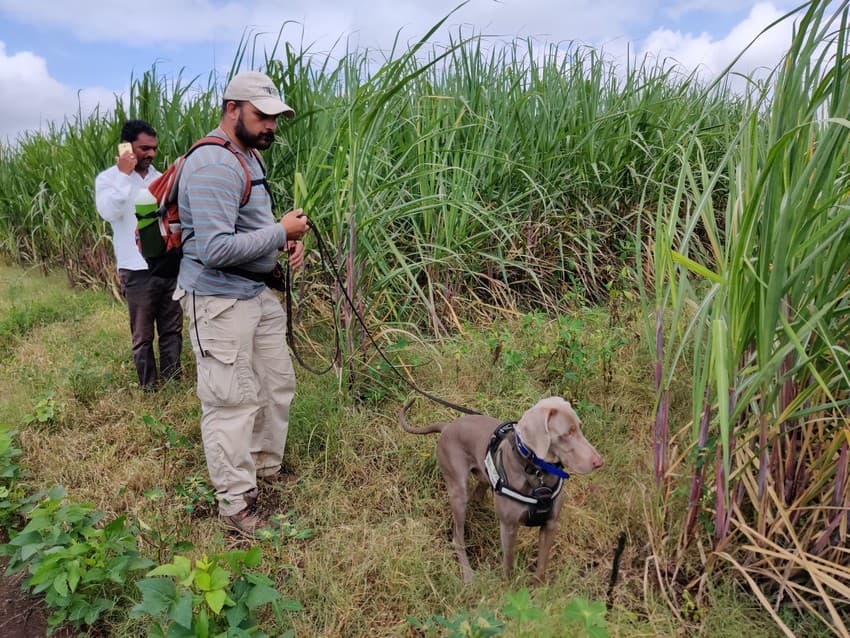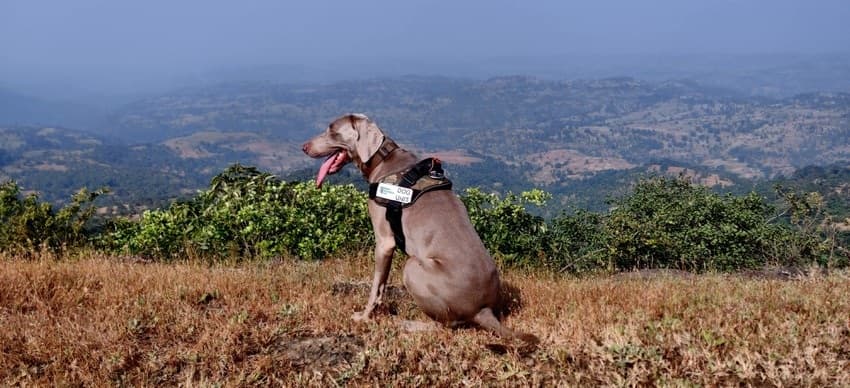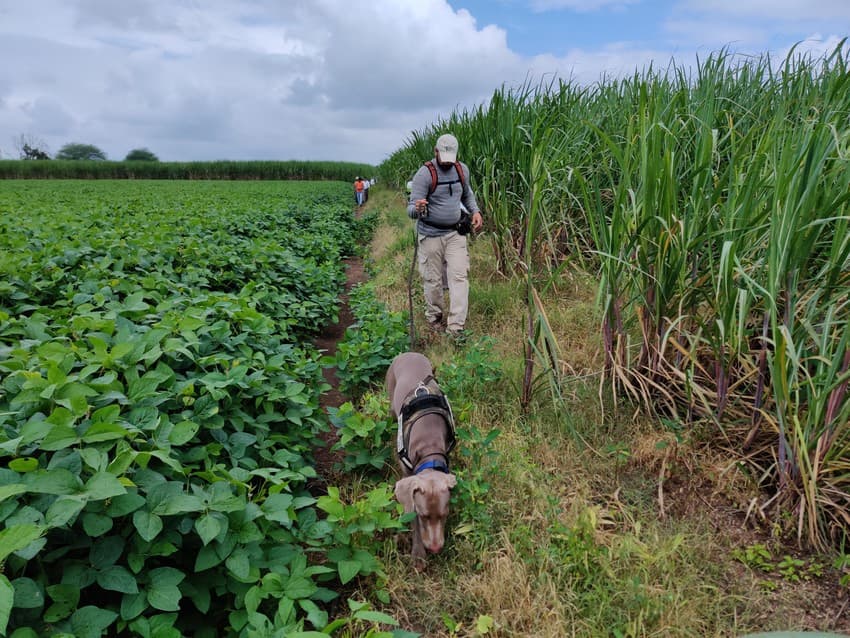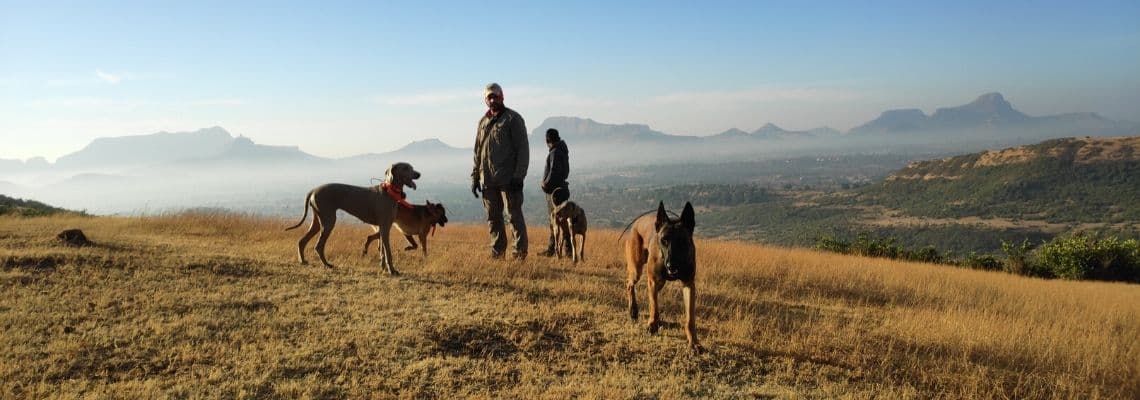WCT’s Conservation Dogs Units (CDU) comprises, at the moment, three specially trained working dogs to carry out varied tasks related to detection of target species or indirect evidence left behind by wildlife or wildlife poachers, and a well-trained staff which works in tandem with these extraordinary dogs. The olfactory capabilities of dogs aid in ongoing conservation efforts and investigations.

Photo: Prasad Gaidhani/WCT
Conservation dogs or detection dogs are proving to be a huge asset to conservation, research and wildlife crime investigation around the world. The dogs bring to the table a unique approach to detection and search, increasing accuracy and reducing the time invested. Humans rely primarily on vision to detect tracks and signs, while dogs scan the same landscape using their sophisticated olfactory sense. Dogs can detect the presence of scats, animal or human track, blood trails, kills and urine of target species, which in turn helps to arrive at answers to research queries, conservation challenges and crime investigation.

Photo: Kiran Rahalkar/WCT
The main objective of WCT’s CDU is to assist our field teams in human-wildlife interface management, conservation research, road ecology surveys, disease surveillance, and wildlife law enforcement. Our conservation dogs have been deployed on corridor conservation and conflict-related projects and have proved to be very effective.

Photo: Prasad Gaidhani/WCT
Your donations support our on-ground operations, helping us meet our conservation goals.
Header image © Ninad Bhosale/WCT
Related Links
- An Encounter with a Sloth Bear
- From Under Our Feet
- Protecting India’s Forests in the Time of COVID
- Wildlife Trafficking: Here’s What You Should Know
- Road-construction spree in Asia could mean the end of the road for tigers

